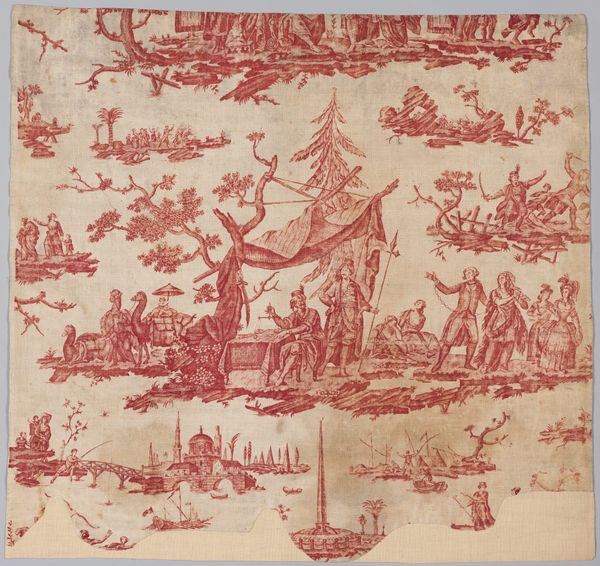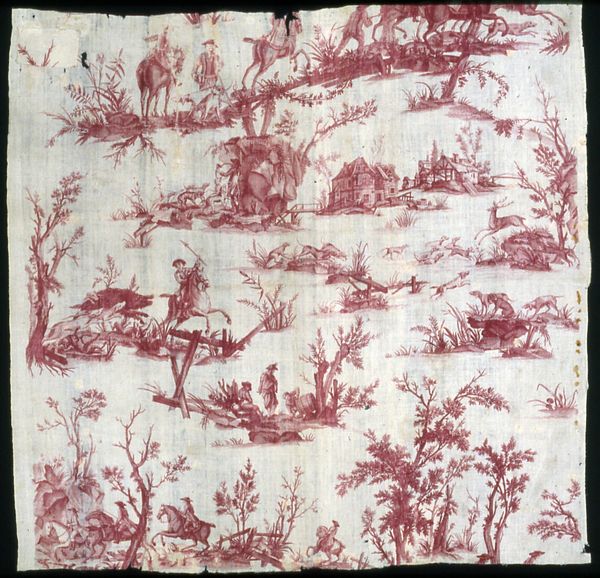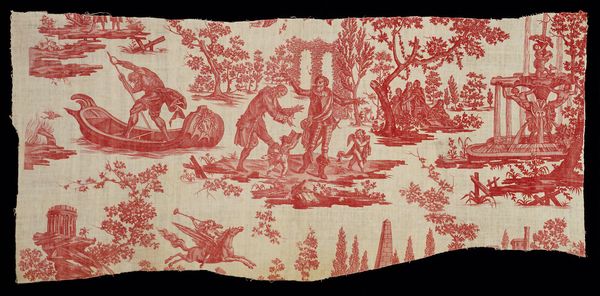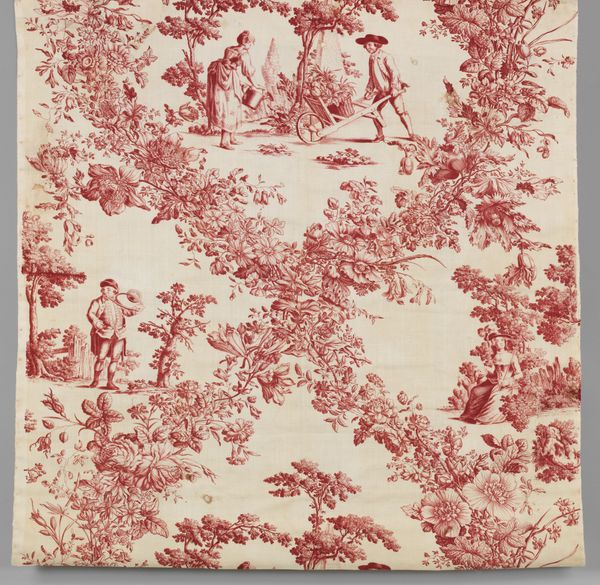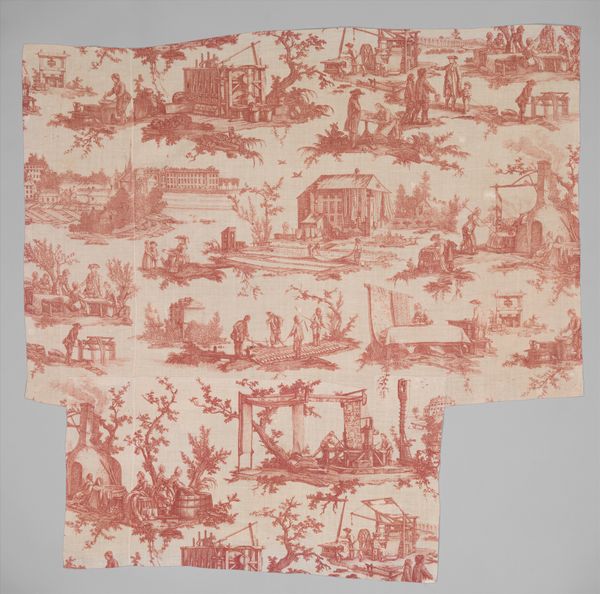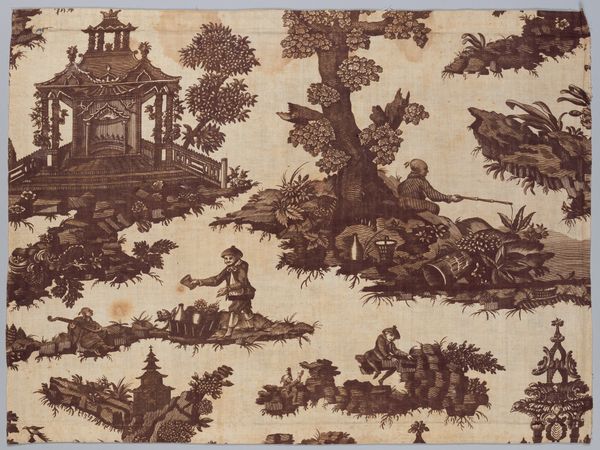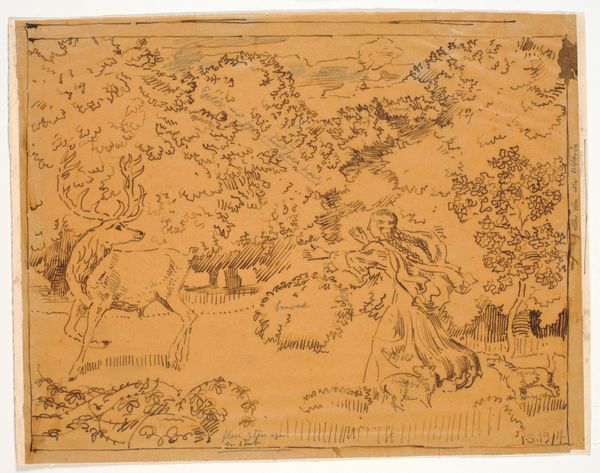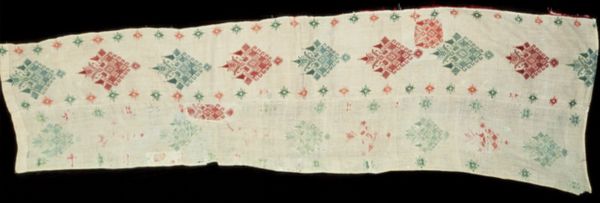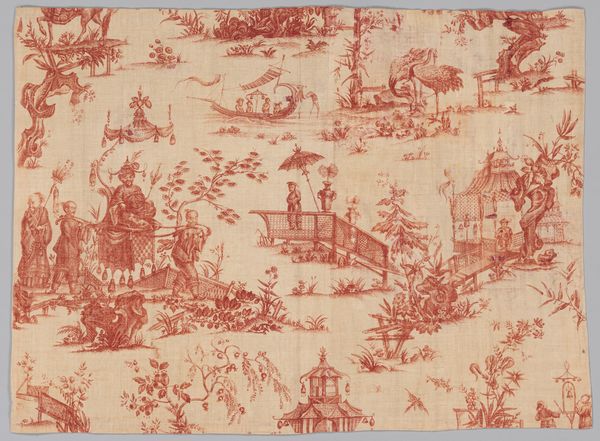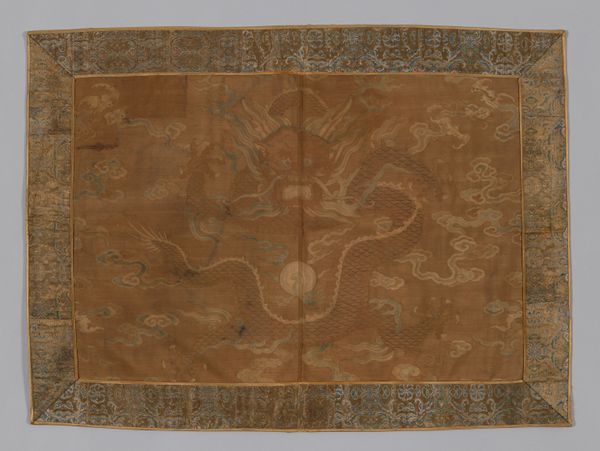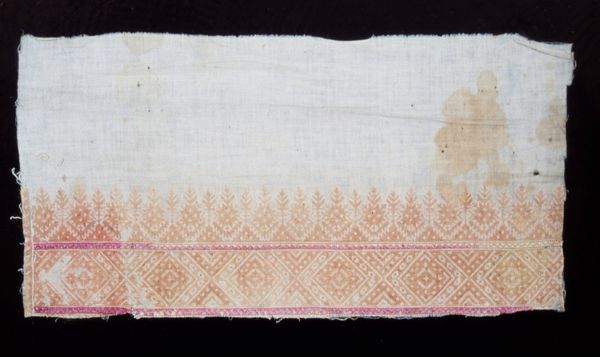
Don Quichotte (Don Quixote) (Furnishing Fabric) c. 1785
0:00
0:00
Dimensions: 31.6 × 85.3 cm (12 3/8 × 33 1/2 in.)
Copyright: Public Domain
Editor: So, this is "Don Quichotte," or "Don Quixote," a furnishing fabric from around 1785 by Jean Jacques Lagrenée. It’s currently at the Art Institute of Chicago. It's primarily woven textile with a sort of Rococo feel, but the figures feel very vibrant to me. What's your take on this piece, and what should visitors know? Curator: I see a narrative deeply embedded in the social fabric of 18th-century France. Rococo wasn't just about ornamentation; it was about the stories we told ourselves. Lagrenée's choice of Don Quixote is significant. He’s a figure who challenges societal norms, driven by idealism, even if misguided. Editor: Right, he’s literally tilting at windmills! How does that relate to this being a furnishing fabric? Curator: Consider the context. Fabric like this wasn't just decoration. It brought stories, and implicitly values, into domestic spaces. What does it mean to live amongst a romantic hero? Don Quixote’s idealism becomes a daily aspiration, a quiet rebellion against the rigid social structures of the time. The choice of monochrome also has class connotations: have you considered those? Editor: So the relative lack of color could represent the lower social strata, compared with the elaborate multi-color tapestries of nobility? Curator: Precisely. And think about the genre painting themes: Lagrenée invites us to find heroism in the everyday, and to see social critique woven into the very fabric of our lives. Editor: This piece really prompts a look past pretty aesthetics! It’s about challenging norms, even through decoration. Thank you. Curator: And in turn prompting future decoration with an updated ideal!
Comments
No comments
Be the first to comment and join the conversation on the ultimate creative platform.
